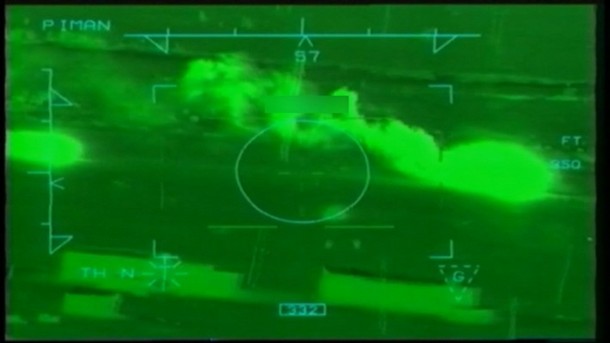
From Eric Schmitt and Steven Lee Myers, the New York Times: As rebel forces in Libya converged on Tripoli on Sunday, American and NATO officials cited an intensification of American aerial surveillance in and around the capital city as a major factor in helping to tilt the balance after months of steady erosion of Col. Muammar el-Qaddafi’s military.
The officials also said that coordination between NATO and the rebels, and among the loosely organized rebel groups themselves, had become more sophisticated and lethal in recent weeks, even though NATO’s mandate has been merely to protect civilians, not to take sides in the conflict.
NATO’s targeting grew increasingly precise, one senior NATO diplomat said, as the United States established around-the-clock surveillance over the dwindling areas that Libyan military forces still controlled, using armed Predator drones to detect, track and occasionally fire at those forces.
At the same time, Britain, France and other nations deployed special forces on the ground inside Libya to help train and arm the rebels, the diplomat and another official said.
“We always knew there would be a point where the effectiveness of the government forces would decline to the point where they could not effectively command and control their forces,” said the diplomat, who was granted anonymity to discuss confidential details of the battle inside Tripoli.
“At the same time,” the diplomat said, “the learning curve for the rebels, with training and equipping, was increasing. What we’ve seen in the past two or three weeks is these two curves have crossed. . . .”
“The rebels certainly have our phone number,” the diplomat said. “We have a much better picture of what’s happening on the ground.”
Rebel leaders in the west credited NATO with thwarting an attempt on Sunday by Qaddafi loyalists to reclaim Zawiyah with a flank assault on the city. (photo: French Ministry of Defense/Reuters)
Image: reuters%20French%20MoD%206%204%2011%20Helicopter%20attack%20Libya.jpg
